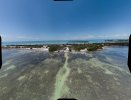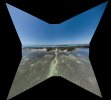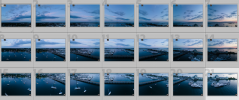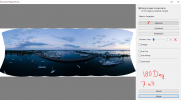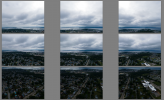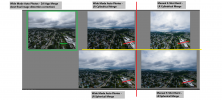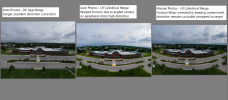Hey there!
This is specific to DJI's 9-shot 'Wide' panoramic feature.
I'm attempting to use the 9 RAW DNG files off of my Air 2, and stitch them in Lightroom/Lightroom Classic, rather than using the version auto-stitched by the DJI app/drone:
1) to retain the RAW file instead of the lossy JPEG the app spits out
2) to retain the full resolution on pano's
3) because the DJI app sometimes stitches poorly.
However, in Lightroom/Lightroom Classic, even at 100% boundary warp, I can't stretch the horizon to being anywhere near flat (first picture, Lightroom on Left, DJI on Right). Attached are snippings of the following Pano settings:
My guess is that it stems from the angled gimbal action that the Air 2 is using to capture the corner shots, as seen in the last picture of with all 9 images in their captured grid. My last ditch idea was to crop each image to level the horizons, but I think LR/LRC still work with the original image, not your crop. Maybe cropping, exporting a new base file, then importing and using the new leveled image for the pano merge, but obviously this would be a horrible workflow for every 9 shot image.
To anyone interested enough to have gotten this far... thanks for your ideas!
-Chris
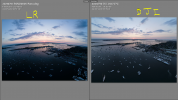
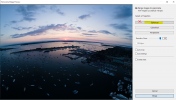
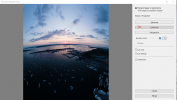
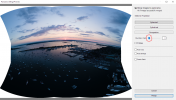
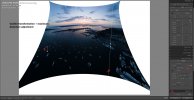

This is specific to DJI's 9-shot 'Wide' panoramic feature.
I'm attempting to use the 9 RAW DNG files off of my Air 2, and stitch them in Lightroom/Lightroom Classic, rather than using the version auto-stitched by the DJI app/drone:
1) to retain the RAW file instead of the lossy JPEG the app spits out
2) to retain the full resolution on pano's
3) because the DJI app sometimes stitches poorly.
However, in Lightroom/Lightroom Classic, even at 100% boundary warp, I can't stretch the horizon to being anywhere near flat (first picture, Lightroom on Left, DJI on Right). Attached are snippings of the following Pano settings:
- Spherical (Correct) (Boundary warp 100%)
- Cylindrical (Boundary Ward 100%)
- (Perspective fails to even compute)
- Spherical (Boundary warp OFF)
- Reach case: Spherical+boundary warp+distortion correction+guided transformation
My guess is that it stems from the angled gimbal action that the Air 2 is using to capture the corner shots, as seen in the last picture of with all 9 images in their captured grid. My last ditch idea was to crop each image to level the horizons, but I think LR/LRC still work with the original image, not your crop. Maybe cropping, exporting a new base file, then importing and using the new leveled image for the pano merge, but obviously this would be a horrible workflow for every 9 shot image.
To anyone interested enough to have gotten this far... thanks for your ideas!
-Chris











